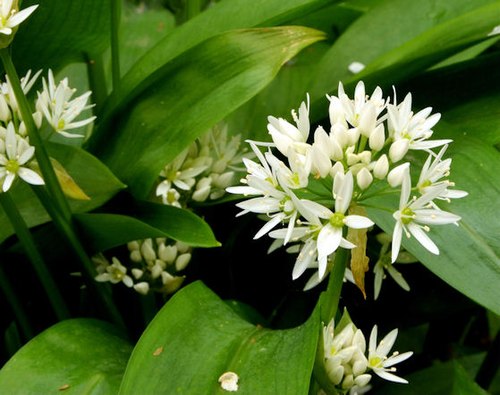Rampsholme Island, also known as Rampsholm and Ramps Holme, is the smallest of the four main islands of Derwentwater, the other three comprising of Derwent Island, Lord's Island and St Herbert's Island. Rampsholme and Lord's Island formed part of Castlerigg Manor and the Earls of Derwentwater's estates. Unlike Lord's Island, Rampsholme does not have any structural remains as it was not used as a place of residence. The other three islands have all had some form of habitable structures on them; the only one today is the 18th century house on Derwent Island, and rented out to private residents so boat landing is not allowed here.
The National Trust owns all four of the islands. Boat users are welcome to land on Rampsholme Island, however, overnight camping is not allowed.[1][a]
Etymology


The name Rampsholme is almost identical to that of Rampholme in Windermere. Although they are in two different locations, both are lake islands and bear striking similarities, at least in their modern environment. Their names would suggest they derive from the same meaning.
Norse speech was being used until the 13th century,[2] long after the Normans landed and French was the offical language among the nobles and elites of the country. The rest of the population spoke the tongue they were born into; little changed for the lower or working classes regarding their language, already evolved as it was. In the north west there was a lot of Scandinavian influence and "the abundance of Norse names leaves little doubt that as most of England succumbed to the Norman yolk, a thriving Scandinavian community flourished here in the north—and continued to do so for many years to come." [2] With Rampsholme Island, Old English and Old Norse are both plausible.
Rampsholme gets its name from two possible sources:
- Old Norse: Hrafn holmr where hrafn → raven and holmr → island
- Old English: Hramsa holm where hramsa → ramson and holme → island
Additionally:
- Ramsons are onions or broad-leafed or wild garlic, synonymous with ramp, hence the name Rampsholme → Garlic Island or the island where garlic grows.
- Holme or holm means a small island or islet on a lake, river or estuary.
- The Old English form of raven is hræfn which is cognate with Old Norse Hrafn.
Past uses
There is evidence that a medieval bloomery or some form of iron working once existed on the island, although no trace of the actual furnace survives today. There is a parallel between Rampsholme Island and Peel Island at Coniston Water whereby both islands were used for iron working.[3] W.G. Collingwood (1904), having investigated the site stated: "I could not find the exact site of the hearth without digging; but under the trees and moss in the highest part there is material enough, and a blackness in the earth which betrays the smithy."[3] He also mentions that the scale would have been too small for the German miners who lived and worked on Derwent Island, then named Vicar's Island, in the 16th century. It was more likely to have been a private enterprise by the Radcliffes or the Derwentwaters before them.
There is no exact date for the bloomery but National Trust Heritage Records Online provides a date range between 1066–1535 CE (see links below). The evidence suggests that there was a large amount of slag discovered on the north facing beach, which had likely been dumped there after the firing process was complete.[4] At various locations across the island are large cobbles that show signs of burning, which comes from modern intervention where people have lit camp fires. That said, some of the stones show signs of intense heat, suggesting a furnace.[4] Any other evidence that may have existed has either suffered at the hands of storm damage or possibly removed long ago by human interference.
External sites
The following links from the National Trust Heritage Records Online website details the following archaeological interests:
Notes
- ↑ From the National Trust website: A wild camp pitch should be above the highest fell wall (approximately 400m or 1200 feet high) and shouldn't be noticed by anybody else. This means staying away from any buildings or other wild campers. Don't camp next to steams or springs to avoid contaminating the water. Arrive late in the day (dusk) and move on at dawn....If your planned pitch is not above the highest fell wall this is illegal fly camping - not wild camping. We don't give permission for camping in valleys, by lakeshores or any lowland area unless it's on an official campsite.
References
- ↑ Wild Camping in the Lake District National Trust. Retrieved 1 February, 2023.
- ↑ 2.0 2.1 Gambles, Robert (1985). Lake District Place-Names. 2nd Edition. Dalesman Books. p.9.
- ↑ 3.0 3.1 Collingwood, W.G. (Ed.) (1904). Transactions of the Cumberland & Westmorland Antiquarian & Archaeological Society. Kendal. vol.4. p.276-277.
- ↑ 4.0 4.1 Iron Working Site (Bloomery) Rampsholme, Derwentwater National Trust Heritage Records. Retrieved 31 January, 2023.